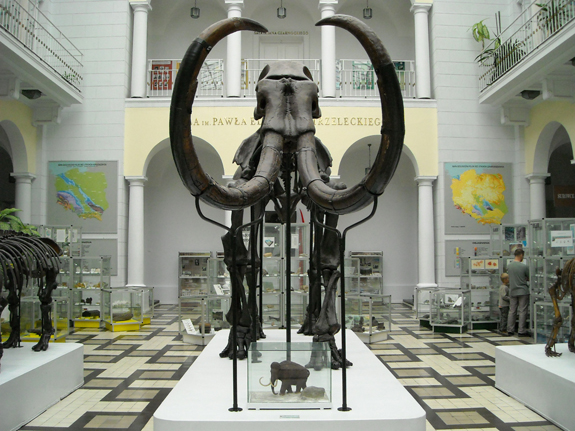Russian Mammoth Discovery May Lead to Furry Clones
Scientists discovered the remains of a woolly mammoth in Yakutia region on Russia’s Arctic coast

Will the furry beasts roam the earth once more? Photo: Ag.Ent.
Last week, 16 to 20 feet below the frozen earth, scientists discovered the remains of a woolly mammoth in Yakutia region on Russia’s Arctic coast. The specimen, which includes fur and bone marrow, has some scientists thinking there may be a mammoth clone in the cards.
If living cells preserved by the Siberian permafrost are found, it may be possible for scientists to clone the beast. Reuters reports:
“‘All we need for cloning is one living cell, which means it can reproduce autonomously. Then it will be no problem for us to multiply them to tens of thousands cells,’ said Semyon Grigoryev, a professor at North-East Federal University (NEFU).”
While they have found nuclei “intact”—complete with a whole nucleus—the success of this Jurassic Park-esque endeavor is unlikely, Grigoryev says. Only if the remains stayed at a stable temperature between 28 and -4 Fahrenheit could any cell have survived over hundreds of thousands of years.
South Korean scientist Hwang Woo Suk will take on the task of determining whether the discovered cells are, in fact, clonable. Though Mr. Hwang’s ’breakthrough’ record with Sooam Biotech is fuzzy, in March, the scientist signed an agreement with Russia’s NEFU hoping to produce a living mammoth within six years.
Experts from the Russian Academy of Science doubt the likelihood of cloning the mammoth. In fact, some argue the word “cloning” may not even be an accurate term for the procedure scientists hope to carryout. Russia Today explains:
“Agadzhanyan also said that “cloning” isn’t a proper term to use when speaking about bringing mammoths back to life.
Cloning is reconstructing an organism from a somatic cell, while what scientists want to do with mammoths is to add mammoth DNA to an elephant’s egg cell—a completely different procedure, he explained.”
Five years ago, in the same region, a team discovered a 40,000-year-old “pickled” female baby woolly mammoth, endearingly known as Lyuba by scientists. Though, the find was both astonishing and cute (kind of), the baby mammoth did not contain living cells—though her skin and organs were intact. National Geographic went into detail about Lyuba’s death and her state of preservation in this interactive CT scan.
Scientists have made several attempts at cloning the furry beasts since the 1990s, none of which have been successful. Though, if you ask, Dr. Ian Malcolm, that may be a good thing.
Update: This post originally said that Hwang Woo Suk performed the first commercial cloning of a dog. It was a former colleague, Lee Byeong-chun, who was responsible. We regret the error.
More from Smithsonian.com:
Mammoths and Mastodons: All American Monsters
Brave New World
When Will There Be Herds of Mammoths?
/https://tf-cmsv2-smithsonianmag-media.s3.amazonaws.com/accounts/headshot/561436_10152738164035607_251004960_n.jpg)
/https://tf-cmsv2-smithsonianmag-media.s3.amazonaws.com/accounts/headshot/561436_10152738164035607_251004960_n.jpg)